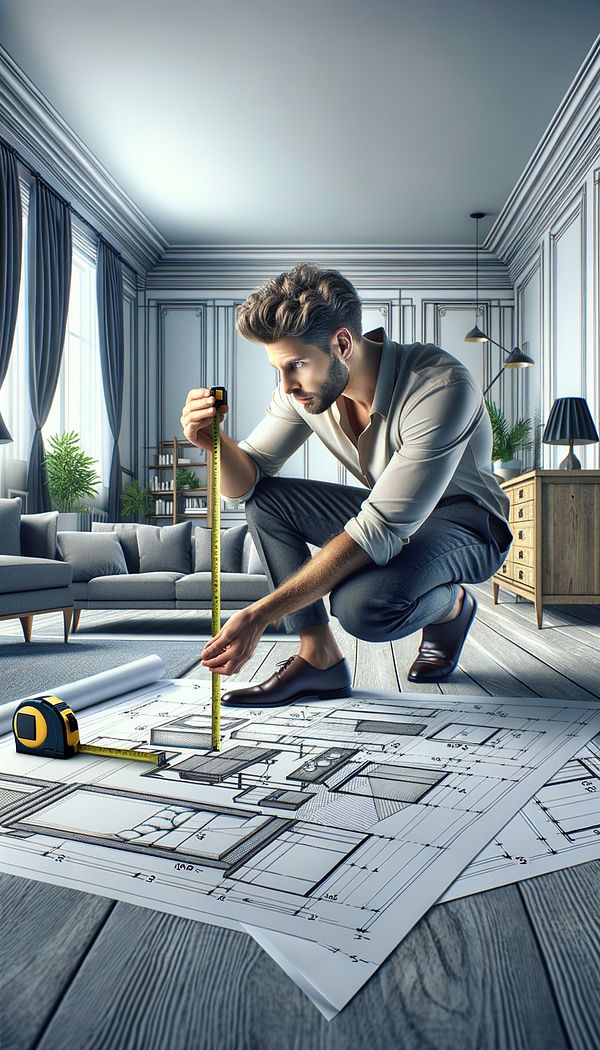What is Size?
Size refers to the dimensions or proportions of an object or space.
Description
In the realm of interior design, size plays a crucial role in shaping how a room feels and functions. It refers to the dimensions or proportions of both objects and spaces, directly affecting aesthetics, comfort, and practicality within an environment. Understanding and effectively manipulating size can transform a space from feeling cramped and cluttered to spacious and inviting.
When considering the size of furniture, accessories, or even spaces like rooms or outdoor areas, it's essential to think about scale and proportion. These elements work together to create harmony and balance in interior design. An oversized sofa in a small living room can overwhelm the space, while too many small pieces in a large room may look scattered and uncoordinated. Size considerations also extend to decorative objects, textiles and upholstery, and wall treatments and finishes, where the right proportions can enhance the overall visual appeal.
Size doesn't just impact visual aesthetics; it's also intimately tied to functionality. In kitchen and bath design, for example, ensuring that fixtures and appliances are the right size for the space and user needs is fundamental. Inclusive design practices, like those seen in accessibility and ergonomics, also heavily depend on the appropriate sizing of spaces and objects to accommodate a range of abilities and preferences.
Usage
In practical scenarios, an interior designer might assess the size of a room to determine the appropriate sizes for furniture pieces, ensuring they fit comfortably and leave adequate walking space. Similarly, in a kitchen renovation project, the size of appliances and counter spaces must be considered for both aesthetic appeal and practical usability. Outdoor furniture types also need to be selected based on the size of the patio or garden area, to create inviting and functional outdoor living spaces.
FAQs
-
How does size impact interior design?
Size impacts interior design by influencing the overall feel, functionality, and aesthetic of a space. Correctly scaled furniture and decor can make a room feel more harmonious and visually pleasing, while also catering to practical needs.
-
Why is considering size important when selecting furniture?
Considering the size of furniture is important to ensure it fits well within the space, complements other pieces, and maintains adequate circulation and functionality in the room.
-
Can the perception of size be altered through design?
Yes, the perception of size can be altered through various design strategies, such as the use of color, light, and mirror placements. For example, light colors and mirrors can make a small room appear larger.
Practical Application
When planning an interior design project, always start by measuring the space to accurately assess size and proportions. Use these measurements to guide your furniture and decor selections, aiming for balance and proportion in the layout. Consider employing visual techniques to alter the perception of size in a space, such as using mirrors or strategic lighting, to achieve the desired effect.
-
Design Styles478 articles
-
Furniture Types599 articles
-
Space Planning & Layout134 articles
-
Accessibility & Ergonomics30 articles
-
Hope ChestA hope chest is a storage chest traditionally used to collect items such as clothing and household linen, by unmarried young women in anticipation of married life.
-
Dentil MoldingDentil molding is a decorative architectural element featuring a series of closely spaced, rectangular blocks.
-
Persian RugA Persian rug is a handwoven carpet from Iran, known for its intricate designs and high quality.
-
Ball & ClawBall & Claw is a type of furniture leg that resembles an animal’s claw holding a ball.
-
ContrastContrast is the difference in luminance or color that makes an object distinguishable.
